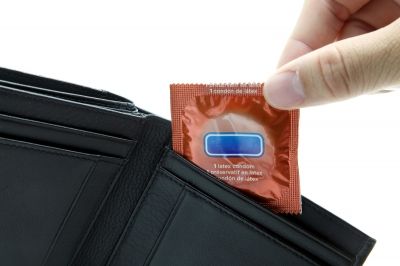Frequent Condom Mistakes. Does Your Partner Makes Them Too?
Learn from this hub the most common mistakes in the use of condoms!
For some, this subject can be a taboo. But, making love is something that is done every day, everywhere in the world, whether you are heterosexual, homosexual, young, middle-aged or mature. Everybody makes it at some point in their lives, whether for recreation or procreation.
When it comes to this, safety is a key for the protection of yourself and your partner.
So, condoms are the solution to an unwanted pregnancy and to protect against diseases.

As many people are aware, condoms are essential to prevent the spread of diseases. They are also essential to protect yourself against HIV and contrary to popular belief, you cannot catch HIV from an infected partner when you wear a condom unless there is a fault with your condom. It is important that you check the expiry dates of your condoms, and use only lubricants with the compatible condoms.
Many people fear that their condom breaks easily. Condoms that are made from materials such as latex are designed to withstand a big stretch, but all condoms are widely tested to obtain a good understanding of their sustainability. If you're worried about weak condoms, make sure that the purchase of condoms that are certified as being tested.
Each year, about 440 million Americans buy condoms.
In order to be safe at any time, you should always change your condom after using it. Continuing with a used condom, you risk the chances of rupture, which can then lead to pregnancy.
THINGS TO KNOW ABOUT CONDOMS
Maybe you know, maybe you don't know
1. Available only on prescription
When first produced, the condoms were available only on prescription, only for the husbands, to be able to protect against diseases from prostitutes.
However, no prescription for women in order to protect themselves against unwantedpregnancies or for any other reasons. My, how times have changed!

2. How to put a condom in 12 steps
Condoms were not always so easy to use. A text from 1824 talks about a condom that had a 12 step instruction guide, consuming a lot of time. This condom was made of sheep intestines. After so much effort, it is no wonder that, at that time, there were reusable condoms.
3. The invisible condoms
Clinical research on the invisible condom have been carried out at the University of Quebec. It is in fact a gel that hardens at high temperatures and enters the category of condoms for women. "Invisible" condom still awaits the approval of the Canadian Government.
4. Japanese condoms from turtle shell
In Japan, in the 19th century, condoms were made from leather and tortoise shell.
5. Who was the first?
Some researchers attribute to the Egyptians the invention of the condom, although only in the 16th century began to be used more frequently. The Egyptians already knew this method, because in some frescos (a technique of mural painting) it can be seen men carrying a kind of lining around his organ.
The Greeks used the goat intestines and the Chinese used oiled rice paper.
6. The condoms in the Medieval times
The first work written about the use of condoms dates back to the 16th century and belongs to the Italian Gabriel Falloppio. He recommends softening of fabrics in a chemical solution and letting it out to dry before using. Falloppio claims that he conducted an experimental research on 1,100 men, using a kind of wool glove.

7. The oldest condoms
The oldest condoms found dates from the year 1640, and they were discovered in Dudley Castle, England. They were made of animal gut and is believed to have been used against sexually transmitted diseases.
The condoms made from sheep's intestines are used even today, but the most "popular" material for the male condoms is latex.
8. The "spray-on" condoms
The German scientist Jan Vinzens Krause has invented a "spray-on" condom, which is still in the testing stage. It pulverizes on the organ and it dries in only 5 seconds. Its main advantage is the fact that it perfectly follows the shape of it.
9. It's not perfect, but...
A condom does not guarantee 100% protection, although the method of contraception is the most effective against diseases.
10. Female condoms are less effective than male condoms
Annually, in the US, about 21 out of 100 women remain pregnant from the use of the female condom (only 11 out 100 women get pregnant using male condoms).
11. For those who blush when they say the word "condom"
It has been used for 15,000 years!
The oldest illustration that is known from a man using a condom is painted on the wall of a cave in France (dated 12,000 to 15,000 years old).
12. From where comes the name "condom"?
Etymologically, the word "condom" is probably derived from Latin "condus" meaning receptacle, that collects and preserves something. Or "condare", which means to protect.
13. Like most inventions, everything is a lucky accident
In 1921, Alfred Trojan accidentally dunked his organ into a vat of vulcanized rubber. After the incident, it was irreparably deformed, but Trojan ended up founding one of the world’s largest condom companies.
THE MOST COMMON MISTAKE. 3 out of 4 men make this mistake!
These are the conclusions of scientists after 16 years of condoms studies.
A team of scientists analyzed for 16 years the most common mistakes in the use of condoms. Learn from the article that the conclusions and their advice.
The researchers, led by Stephanie Sanderd, from the University of Indiana, put end of a 16 years study in the field of the use of condoms.
They analyzed different condom use groups of people, from adults to students, from 14 countries.
Thus, they were able to conclude the most common mistakes made using a condom, the error resulting in unwanted pregnancies or diseases.
A common mistake made by approximately 50% of respondents
To put a condom in the middle of intercourse and not before starting it. In this case, the effect is null.
Second on the list of mistakes
To leave a little space at the top, where to collect the sperm.
Without checking
The worst is that 75% of men and 82% of women do not check before they use the condom to use if it's intact.
Another serious mistake
The use of oil-based lubricant, which damage latex condoms are made from. The recommendation is water-based lubricants or silicone.
No! No! No!
Even if it seems incredible, approximately 3% of respondents admit that reuse a condom at least twice.
Here are the main types of condoms, advice regarding their use, as well as some new information about this topic
Latex condoms
1. It is considered that latex condoms are safer, with a small risk of ruptures.
2. It is possible to be allergic to latex, the alternative being the polyurethane condoms or the
natural latex rubber.
3. You can use these condoms only with water-based lubricants.
4. Both latex condoms and polyurethane condoms provides protection against diseases, but not against infections contracted from open wounds coming in contact with unprotected
skin.
5. If they are used correctly, condoms are 99% effective against unwanted pregnancies.
Condoms made of polyurethane
1. Are thinner than latex condoms, have no odor, are not as sensitive to temperature and ultraviolet light. You can use it if you are allergic to latex.
However, there are a lot more expensive.
And they have a lower elasticity - a greater risk to break.
2. There is the female condom version made from polyurethane. They are used in Europe since 1992.
The female condoms are safe as well, the percentage of efficiency is 95%.
A new material, polyisoprene
1. Are rarer and much more expensive, but do not cause allergies, being made of natural rubber latex.
2. Compared to polyurethane condoms, the polyisoprene condoms are more elastic.
If you use lubricated condoms, a few things you should know:
1. Lubricated condom is not as rigid, the risk that the condom to break being smaller. However, if your partner wants, you can use a lubricant.
2. This type of condom is lubricated with spermicide, or non spermicide substances. It is good to use condoms from the second category because those treated with spermicide can cause irritations or allergies.
3. Avoid condoms lubricated with nonoxyl 9, because it can cause cancer.
You might also be interested in:
- Pregnancy - signs and symptoms. Am I pregnant or it's just a false alarm?
Am I pregnant? This was the question I was thinking obsessively last spring . Even if I did not have pregnancy symptoms, the calendar was telling me that something was different. My instinct too.








